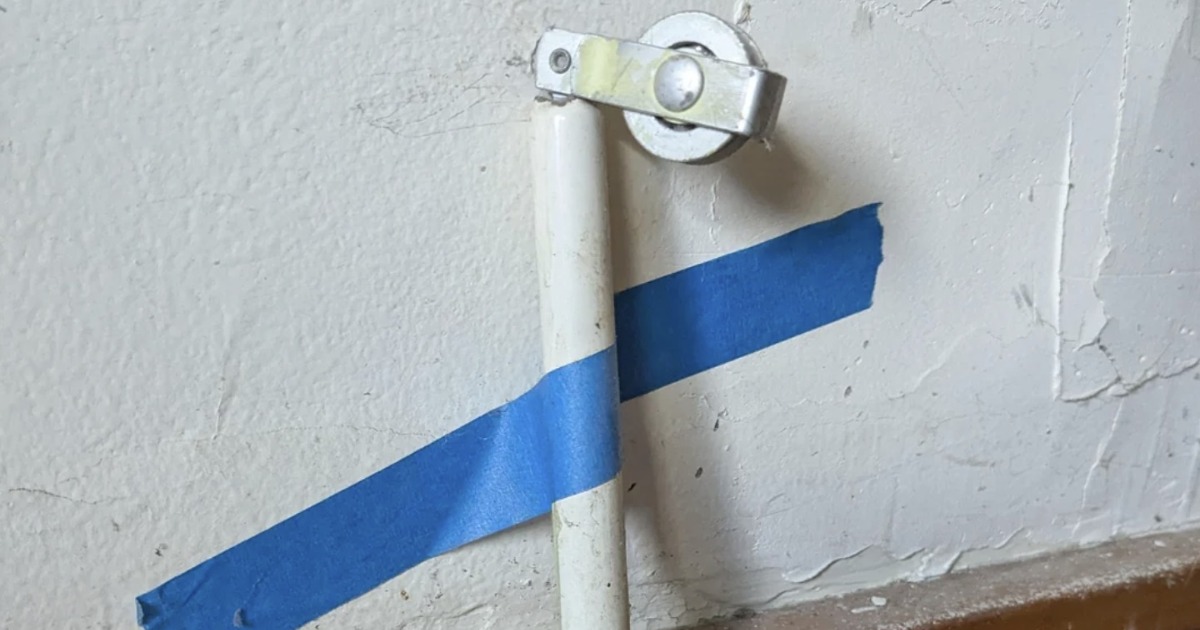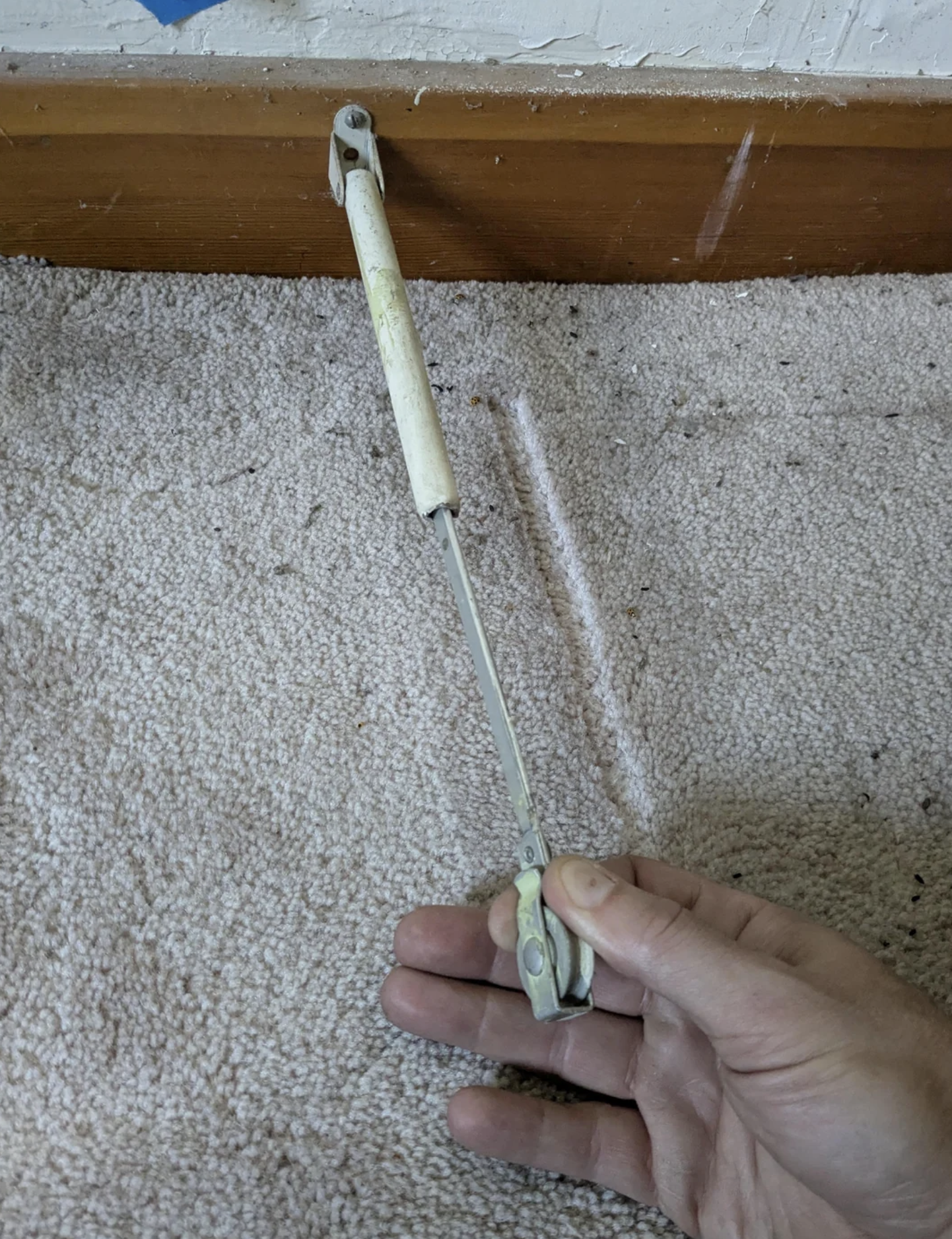The Odd Little Hardware on My Wall

Source: Reddit
I was cleaning behind the couch yesterday when I noticed this weird little metal arm protruding from the wall. The metal piece looked like either a broken doorstop or some old piece of an installation. I took a picture, put it online, and waited for the internet to tell me what it was.
It’s a window blind cord guide—an embellishment I’d never noticed in all the old houses I’ve lived in (and there are many).
A Cord Guide? Seriously?
Old-fashioned blinds—especially Venetian or roller blinds—had long cords, which were often looped. When you pulled long looped cords along a wall, they twisted, banged against the wall, or wore out. The cord guide, which would have a pulley at the end, was a spring-loaded arm that helped route the cord cleanly and reduced friction. he guides even showed which direction to pull the cord to raise or lower the blinds.
This was a smart solution. A simple idea.
I Had These (But Never Knew What They Were)
Once I figured out what it was, I recalled seeing these at my grandmother’s house years ago: little arms with rollers attached that sat behind the curtains. No idea what they were for. Perhaps I thought they had something to do with the heating.
These were common in houses up to the 1980’s—sensible. Modest. Functional.
Then They Went Away
The problem wasn’t the window blind cord guides; the corded loops they managed became hazardous.
By the 1980’s and 90’s, children were being caught in blind cords. Tragically fatal incidents caused manufacturers to change how they made blinds. Manufacturers replaced loop cords with breakaway tassels. Then cord-free systems took over.
Different systems started to eliminate corded blinds from store shelves. And even tighter safety rules for manufacture were put in place.

Why Do I Still Have These?
If you live in an older house, you may still see people with these little arms protruding from baseboards or walls. Some painted over, or taped over. People can easily overlook them or mistake them for bits of broken hardware.
They are simply remnants of older designs. It did represent a prior effort to maintain the neatness of the cords and keep them out of the way.
You can take them off if they are an obstruction if you want. Or you can leave them on the wall as a part of the house’s history.
The Good Old Days—for Better and Worse
Finding old hardware like this gives me pause. It reminds me of how people once solved day-to-day problems with just a few screws and some clever thought.
If you notice a little window blind cord guide like this—take a picture. Post it. Let people guess. Perhaps you will learn something.
Or simply leave it alone. It has earned its place on the wall.